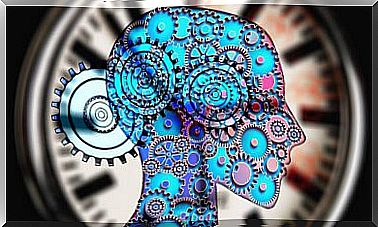The Advantages Of Reading On Paper

Digital devices have re-emerged as an alternative to reading on paper. It is not uncommon to see people reading on the street from a mobile, a tablet or an ebook. However, despite the facilities that these types of devices offer, such as integrating various functions, the printed format is still the preferred one by most readers.
What is the reason for this preference for reading on paper? One of the causes is found in the ease of understanding the texts. Reading a text on paper seems to facilitate understanding compared to reading it on digital media. In other words, it appears that digital media is at a disadvantage when it comes to understanding text. But where does that disadvantage come from?
The death of paper?
Several have been those who proposed the death of books on paper. However, the passage of time has disproved this claim. Although their use has decreased, paper books are still a favorite. The printed word is the preferred word to read in depth, even when they spend most of their reading time in the digital medium. And it is that we understand better what we read when we do it on paper. Especially when we have little time to read. Beyond what we would guess, the new generations seem to understand with more precision when we compare reading on paper to reading on digital media.
It has been proven that when people who read on paper are evaluated against those who read on digital media, the former obtain better results. Those who read digitally have also been found to overestimate their level of learning. That is, they imagine that their level of learning will be higher than it really is; being the estimate of those who read on smaller paper.

Deficit in metacognitive processes
The explanation of the advantages of reading on paper compared to doing it in a digital medium is due to a deficit in metacognitive processes. Specifically, in a deficit in the metacognitive processes that are responsible for monitoring the quantity and quality of learning achieved. This is, what we think about the cognitive resources that are going to be necessary to learn. Therefore, when we read in a digital medium, we make estimates that are further from reality when determining the cognitive resources we need.
The same results, discussed in the previous section, were found when reading time was limited. Thus, when there was a time limit, both the estimation and the learning were greater when it was read on paper than when it was done in a digital medium. This allowed us to conclude that the cause was indeed a metacognitive deficit.
The advantages of reading on paper
In short, it is easier to learn by reading texts on paper than to learn by reading texts on a screen. The cause is the difficulties in metacognitive monitoring, which cause a greater overestimation of the level of learning and lead the learner to an insufficient allocation of cognitive effort. In short, reading in digital media leads us to think that it is easier than it seems and we attribute less cognitive resources to it than we really need.
On the other hand, the digital medium favors a more superficial processing of information. This negatively affects reading and learning. Perhaps using digital media for fast and rushed interactions leads us to repeat it when we read. But the thing does not stop there, taking notes by hand is more efficient than taking them with a computer. Handwritten notes tend to be more elaborate, and those who take them perform better on exams.

These results have important consequences for education. Introducing digital technology into classrooms can reduce or hinder learning. Perhaps before opting directly for technology, due to its benefits, we should know the negative effects in order to better assess the changes.









